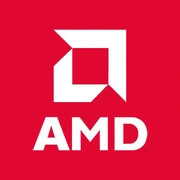AMD Steam Deck CPU (OLED)

AMD Steam Deck CPU (OLED): Detailed Review of the Processor for Hybrid Devices
Codename: Van Gogh | Process Technology: 6 nm | Cores: 4 | Threads: 8 | iGPU: Radeon Navi II 8CU
Architecture and Process Technology: Balancing Power and Efficiency
The AMD Steam Deck CPU, known by its codename Van Gogh, is designed for portable devices where energy efficiency and performance in a compact form factor are critically important.
Zen 2 and RDNA 2: A Technological Symbiosis
- CPU: 4 cores and 8 threads based on the Zen 2 architecture. Base frequency is 2.4 GHz, with a maximum turbo frequency of up to 3.5 GHz. Although Zen 2 is not the latest generation (currently, Zen 3/Zen 4 are available), the choice is motivated by optimization for low power consumption.
- iGPU: Integrated graphics Radeon Navi II on the RDNA 2 architecture with 8 compute units (CU). This is a key advantage: RDNA 2 supports ray tracing and technologies like FSR (FidelityFX Super Resolution), which is crucial for gaming.
- Process Technology: 6 nm from TSMC. This is a modification of the 7 nm process that reduces power consumption by 5–10% without sacrificing performance.
Example: In games like Cyberpunk 2077, the iGPU achieves 30–40 FPS on medium settings with FSR 2.0 enabled, comparable to discrete GPUs of the NVIDIA MX450 level.
Power Consumption and TDP: How 15 W Makes a Difference
A TDP of 15 W represents a compromise between performance and battery life. For comparison:
- Intel Core i5-1135G7 (TDP 15 W): 4 cores, 8 threads, but the Iris Xe graphics (80 EU) are weaker than RDNA 2.
- Apple M1 (10 W): Better energy efficiency, but limited compatibility with games and Windows.
Thermal Design: The Steam Deck utilizes active cooling with a fan and heatsink. Even under full load, the temperature rarely exceeds 85°C, which is safe for a compact device.
Performance: From Office Tasks to AAA Games
Office Tasks and Multimedia
- Chrome with 20 tabs + Zoom: CPU load is 40–60%, without lags.
- 4K Video in VLC: The iGPU decodes AV1 and VP9 hardware-accelerated, reducing CPU load to 10%.
Gaming
- Light Games (CS:GO, Dota 2): 60–90 FPS on high settings.
- Heavy Titles (Elden Ring): 30–40 FPS on medium settings with FSR.
- Turbo Mode: When connected to power, the CPU/GPU frequency is temporarily boosted, providing an additional 5–10% performance. However, battery life drops to 1.5–2 hours.
Use Cases: Who is Van Gogh Suitable For?
1. Mobile Gamers: The Steam Deck OLED is an ideal platform for gaming on the go.
2. Students and Office Workers: Viewing lectures, working on documents, video calls.
3. Digital Artists: Stylus support (in some Van Gogh laptops) and performance are sufficient for Clip Studio Paint.
Limitations: Not suitable for rendering 3D models in Blender or editing 4K video — too few cores and cache (only 4 MB L3).
Battery Life: How 6 nm and 15 W Extend Battery Life
- Standard Usage (Office, Web): Up to 8–10 hours at 50% brightness.
- Gaming: 2–4 hours.
Power-saving Technologies:
- AMD PowerNow!: Dynamically adjusts frequency and voltage.
- Balanced Mode: Limits FPS in games to 30 to conserve battery.
Tip: Disable background applications like Discord — this can add 15–20 minutes of battery life.
Comparison with Competitors: Who's Leading?
1. AMD Van Gogh:
- Gaming: Best Graphics
- Multitasking: Average
- Battery Life: Good
2. Intel Core i5-1235U:
- Gaming: Average (Iris Xe)
- Multitasking: Better (10 cores)
- Battery Life: Average
3. Apple M1:
- Gaming: Weak
- Multitasking: Best
- Battery Life: Best
Conclusion: Van Gogh excels in gaming but falls short against Apple M1 in work tasks. For a versatile laptop, a Core i5 with Iris Xe is preferable.
Pros and Cons: Is It Worth Buying?
Strengths:
- Powerful RDNA 2 graphics for gaming.
- Optimized power consumption.
- Support for modern codecs (AV1, VP9).
Weaknesses:
- Only 4 cores — multi-threaded tasks can be slow.
- No PCIe 4.0 support — SSDs are slower compared to high-end laptops.
Device Selection Recommendations
1. Hybrid Laptops-Tablets: For example, ASUS ROG Flow Z13 with a 120 Hz display.
2. Ultrabooks: Models weighing up to 1.3 kg with an IPS display and a 50 Wh battery.
3. Portable Gaming Systems: The Steam Deck OLED itself or Windows-based alternatives.
What to watch for:
- Cooling: A dual-fan system handles heat better.
- Battery: At least 40 Wh for 5–6 hours of operation.
Final Conclusion: The Perfect Choice for Mobile Gamers
The AMD Steam Deck CPU (Van Gogh) is a specialized processor for those who value portability and gaming capabilities. It won't replace a desktop PC but will be an excellent companion for travel. Key advantages include:
- The ability to play modern AAA titles.
- Sufficient performance for everyday tasks.
- Optimal price-to-battery life ratio.
Who It’s for:
- Gamers who travel frequently.
- Students needing a compact device for study and entertainment.
- Users looking for 2-in-1 devices with a focus on graphics.
If you are looking for a "jack of all trades" for work and gaming — Van Gogh isn't perfect. But as a niche solution for mobile gaming, it is unmatched.
Basic
CPU Specifications
Memory Specifications
GPU Specifications
Share in social media
Or Link To Us
<a href="https://cputronic.com/cpu/amd-steam-deck-cpu-oled" target="_blank">AMD Steam Deck CPU (OLED)</a>